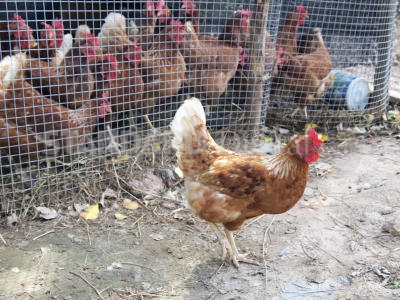
NAIROBI: The battery system of poultry keeping was a result of the mid-20th Century industrialisation of farming that revolutionalised egg production to meet the ever increasing market demand for eggs and egg products.
Thus it is no wonder that the main advantage of the system is in the quantity of eggs it can produce while the disadvantages are tied to the welfare of the bird. In this system layers are confined in cages that are designed to supply food and water and laid eggs rolled out to a collection point.
Advantages
Battery system despite being capital intensive has been shown to be relatively cheaper in the long run in terms of the cost of production per egg as compared to other systems. This is mainly attributable to the reduced wastage in feeds and low labour costs.
While other systems make it impossible to exercise any form of control; the battery system due to the individual confinement of birds exerts controls in the initiation and spread of in such abnormal behaviours.
Confinement of birds in individual cages prevents fighting and cannibalism which are common social friction problems in the dip litter system.
In this system, it is possible to keep records and monitor individual performance of birds thus enabling easy culling of less productive birds. It is also easy to identify a sick bird and to timely quarantine effectively controlling disease flare-up in a flock.
The battery system protects the birds from adverse weather conditions and predators. Apart from the locked doors that birds are securely locked in individual cages making this system safe. Farm pilferage of these birds by workers is also greatly reduced as such an action will be easily noticed through a cursory walk in the unit.
The design of the cages also minimises the occurrence and spread of infectious diseases and parasite infestation. Better hygiene in this system lowers disease incidences especially those spread from the dropping; in addition it is easy to identify and quarantine sick birds.
Disadvantages
The disadvantages of this system are mainly attributable to animal welfare issues; which are pegged on the five freedoms of animals namely: freedom from hunger and thirst, freedom from any discomfort, freedom from pain, freedom to express normal behaviour and freedom from fear and distress.
Animal rights activists see this system as disadvantageous as it denies the bird a good number of these freedoms. These freedoms have scientifically been shown to positively correlate with the health of the birds.
One of the greatest disadvantages of the battery is the confinement if birds which denies them these rights. Birds like any other animal are supposed to enjoy their natural behaviours like nesting, perching, scratching, foraging, exercising, running, flying, wing flapping and free walking.
Chickens have been shown to form friendships, family and social hierarchies and any system that denies them these rights has negative impacts on their social and physiological health.
Stay informed. Subscribe to our newsletter
The denial of some of these rights has scientifically been shown to result in disease conditions for example disuse osteoporosis due to lack of exercise worsened by the huge demand for calcium for egg shell formation.
The end result is weak bones. The boredom in the system also leads to abnormal behaviours like self feather plucking and self inflicted wounds. The neck area is also affected as the hen has to stretch out through the feeder fence to reach the feeding trough; this leads to loss of feathers and bruising over time.
The wire mesh used in making cages and the slanting floor predisposes birds to higher incidence of foot lesions. Lack of proper droppings collection and disposal can result in high ammonia levels from the uric acid rich droppings in the units resulting in stress and lowering egg production.
Battery system hens have been shown to have a higher incidence of reproductive diseases which are attributable to intense egg production and lack of exercise. Inflammation and paralysis of the oviduct and prolapse of the vent and fatty liver heamorrhagic syndrome are common conditions in battery hens.
The lifespan of birds raised in the battery system is low and the egg production begins to wane at about one and half years.
While animal welfare issues are still a grey area in most developing countries in the developed world it is a major market issue.
It determines the price of commodities and animal welfare activism has forced producers to indicate on the labels the system of production employed. While this may not be a concern in the developing worlds albeit the existence of such laws the tide will soon catch up.
(The writer teaches Agricultural Information and Communication at the University of Nairobi)
 The Standard Group Plc is a
multi-media organization with investments in media platforms spanning newspaper
print operations, television, radio broadcasting, digital and online services. The
Standard Group is recognized as a leading multi-media house in Kenya with a key
influence in matters of national and international interest.
The Standard Group Plc is a
multi-media organization with investments in media platforms spanning newspaper
print operations, television, radio broadcasting, digital and online services. The
Standard Group is recognized as a leading multi-media house in Kenya with a key
influence in matters of national and international interest.
 The Standard Group Plc is a
multi-media organization with investments in media platforms spanning newspaper
print operations, television, radio broadcasting, digital and online services. The
Standard Group is recognized as a leading multi-media house in Kenya with a key
influence in matters of national and international interest.
The Standard Group Plc is a
multi-media organization with investments in media platforms spanning newspaper
print operations, television, radio broadcasting, digital and online services. The
Standard Group is recognized as a leading multi-media house in Kenya with a key
influence in matters of national and international interest.


